Online Teaching: The Importance of Performing
By Tom PorterAretha Aoki is teaching a class in the Edwards Center dance studio. Typically, this performance space would be occupied by student dancers, expressing themselves through movement and trying to use every available square inch of floor.
Today, Assistant Professor of Dance Aoki is alone in the studio, addressing students through a webcam. This is the normal state of affairs this semester at Bowdoin, thanks to restrictions imposed by the COVID-19 pandemic. The class is called Making Dances in the Digital Age, one of two courses developed by Aoki this year in response to the challenges of racism and the ongoing public health crisis.
This is primarily a movement-based class, and Aoki takes the students through some yoga moves as a warm-up. She also draws on postmodern dance techniques and improvisation. Due to the remote nature of the class, dance is explored and analyzed on several digital platforms, including TikTok, Instagram, and YouTube. The course regards this on-screen dance as both art and activism, specifically as an expression of the Black Lives Matter movement and as a reflection of popular culture.
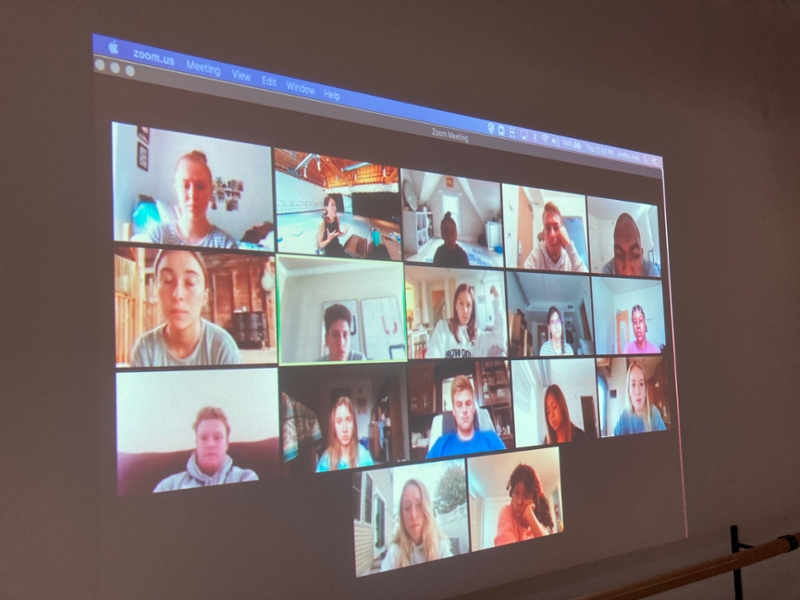
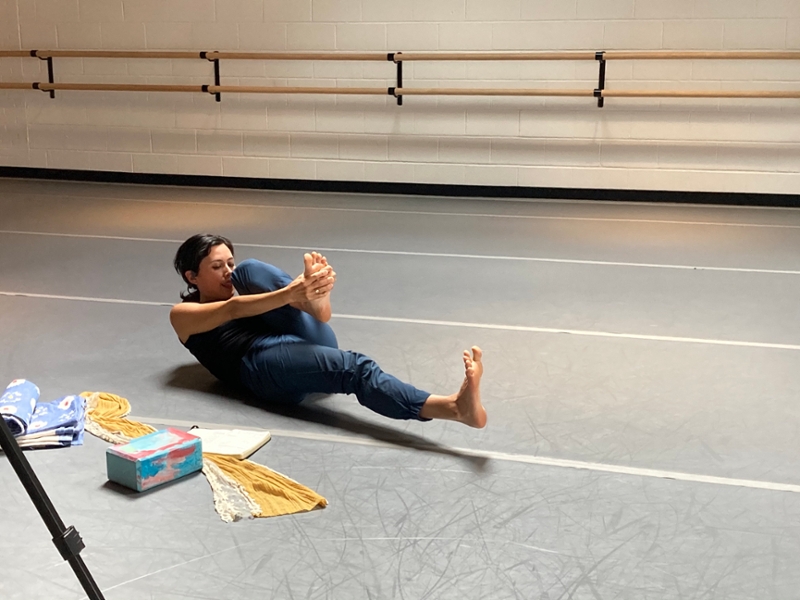
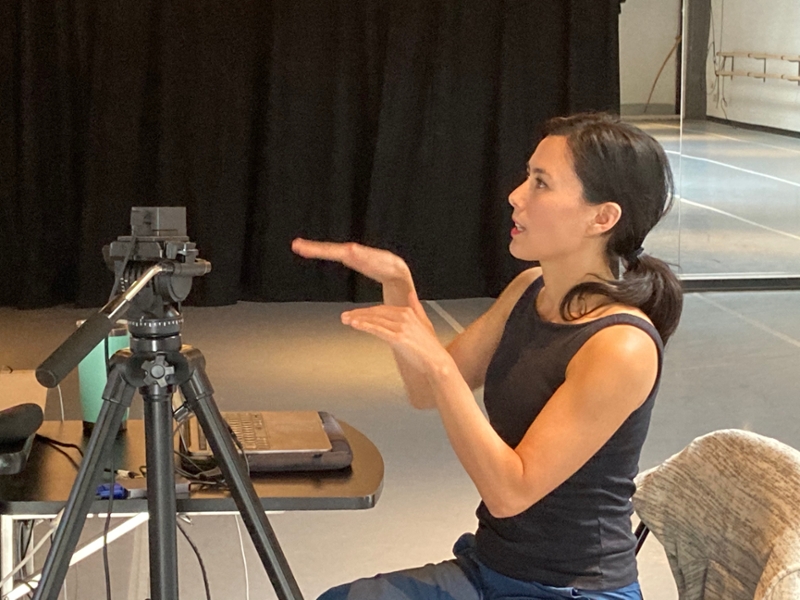
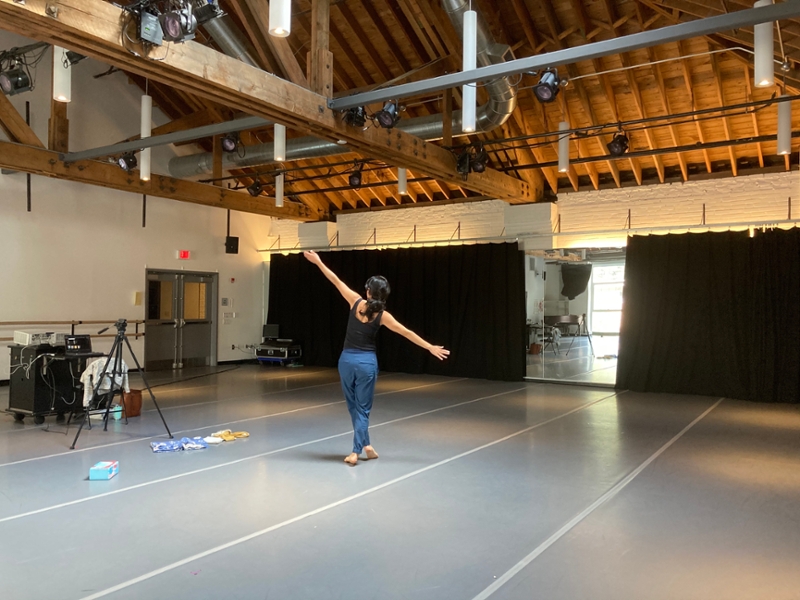
Aoki describes the experience of teaching to a group of disembodied students as “radically different” from the norm. “I’ve got up to twenty students moving together across the floor in limited space. Some of the first-years are in dorms, others might be at home with family members outside the door or even in the same room looking on. We work with the space we have.” That, she adds, is why yoga moves feel appropriate because the yoga mat is all the space you need. “There’s also more emphasis on watching dance and talking about it with this class since we can’t fully ‘do’ dance. Usually, when we’re in a theater or studio, we’re thinking about taking up as much space as possible.” Given the limited space available, Aoki’s homework assignments include asking students to perform a face dance and record it on their iPads.
Due to the remote nature of the class, dance is explored and analyzed on several digital platforms, including TikTok, Instagram, and YouTube.
For Joyce Bor '22, Aoki’s course is “more than a dance class,” which is helping her realize that the dance world is about more than just dance. “It is about identity, unity, expression, and so much more,” she explains. “I really appreciate the fact that Professor Aoki challenges not only our physical, but also our mental selves,” says Bor, an international student from Kenya currently living on campus.
Manuela Velasquez '21 says she added this class at the last minute “to incorporate some movement into my online days, and because some close friends in the dance department had very high praise for Aretha.” She’s living in off-campus housing in Brunswick, and the small size of her room (“where I don’t even have space for a desk!”) has prompted her to take classes in the housing’s indoor barn area. “The class does not attempt to function despite the constraints of remote locations,” she adds, “but strives to function with them. It also re-tunes my relationship with my body and my space every week, and has encouraged me to think more and more about the interconnectivity of muscle, movement, and energy in my life.”
Performing Freedom
Visiting Assistant Professor of Theater Lindsay Livingston has put together a class that draws on her extensive research in the field of race and performance in the US. “As a department, we are deeply committed to increasing curricular offerings that expand students’ understanding of power inequities and put performance in the context of the systems that produce and sustain power inequities, particularly around identity, because that’s such a huge part of performance.”
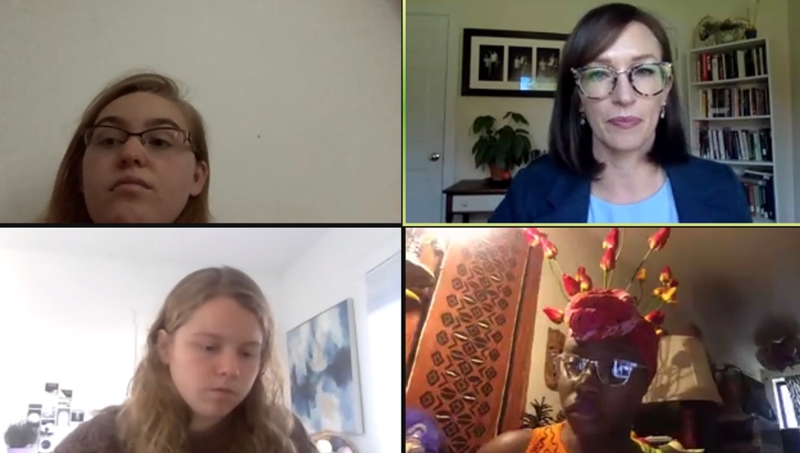
This prompted her to create Performing Freedom (THTR 2508). “It’s a class that looks for ways that people from marginalized groups in the US traditionally used performance to forge spaces of freedom,” she explains. In one class, for example, students discussed a reading assignment that highlighted the subtle ways in which slaves asserted their liberty through small acts of rebellion against their masters, such as plantation work slowdowns. They also look at more over actions such as slave uprisings, Lakota Ghost Dance practices, the 1961 Freedom Rides, and the 1969 Stonewall Rebellion.
Livingston says the class overlaps with disciplines like history and social sciences. “What makes this a theater class is that we are using performance as a way to interpret and understand the past. How do we put the bodies back in history? How do we think of these people not as names on a page but as living, breathing human beings?” These are the questions students grapple with.
The class assignments reflect the performative nature of the course, she says. As well as discussion-based Zoom classes and short written papers, students are assigned less traditional tasks. “One is called the ‘unessay,’ in which students come up with their own theses, but instead of producing a research paper, they are free to choose any medium to articulate their argument. This leaves them free to tackle subjects in ways that are meaningful to them.”
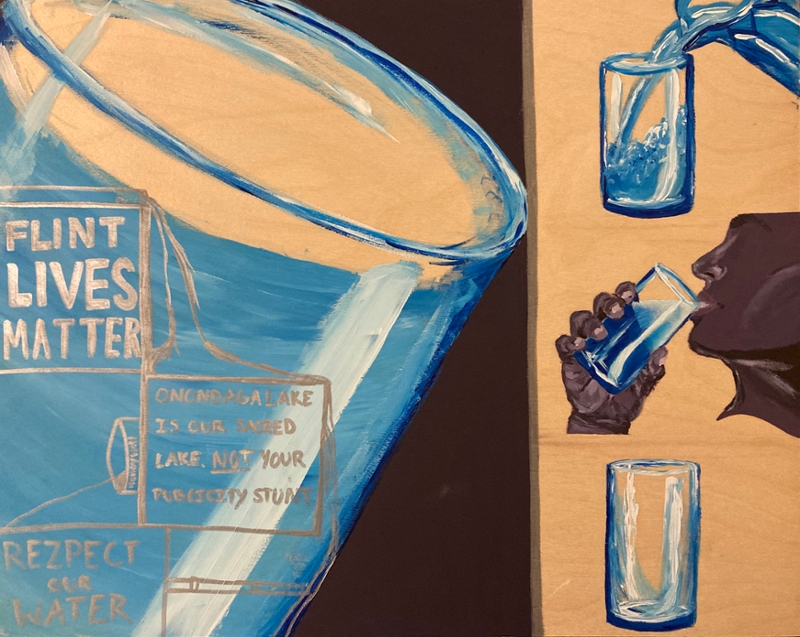
Journey Browne '22, for example, produced a guidebook called “Protesting for Dummies,” a “how-to” manual designed to help citizens safely assert their first amendment rights. Another student produced a painting focused on the performance of freedom through the simple act of drinking water—a project prompted by the struggle for purity in places like Flint, Michigan. Julia Jennings '23 has chosen a different medium. “She did an audio piece, an oral history examining her Quaker upbringing, interviewing members of the congregation about their understanding of freedom and their experience performing it.”
“It’s a class that looks for ways that people from marginalized groups in the US traditionally used performance to forge spaces of freedom.”
The other untraditional project the class is working on is still very much a work-in-progress, says Livingston, and it should result in an online exhibition toward the end of the semester. “Due to the small class size—four students—I thought it a good opportunity to use this moment, where everything is so strange, to have a more hands-on experience.” Class members, she explains, are currently in the process of selecting different locations throughout the US that have featured freedom performances. “They will make an audio performance that a visitor to the site could listen to on headphones, leading them through the geography of this location and what happened there. This is a deeply collaborative project.” Which is important, she adds, because theater, by nature, is a collaborative art form, even when people are apart.